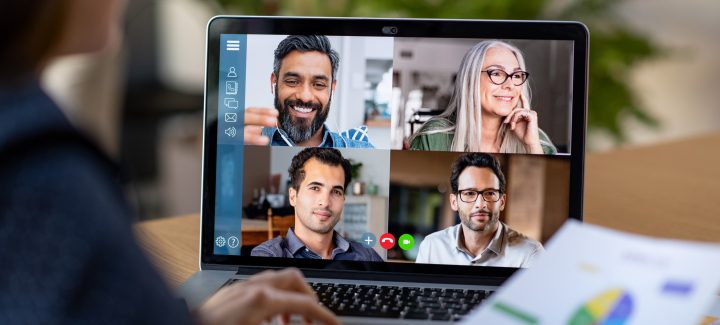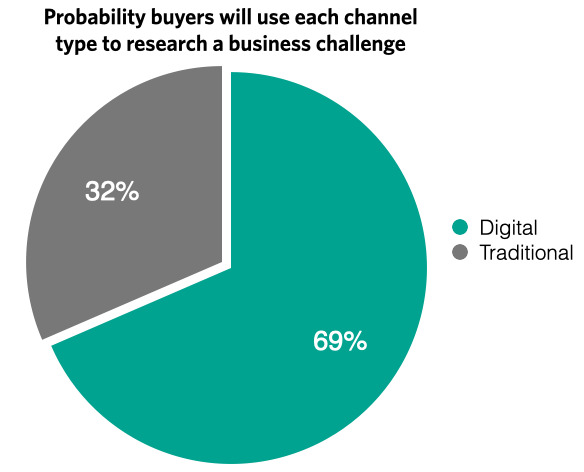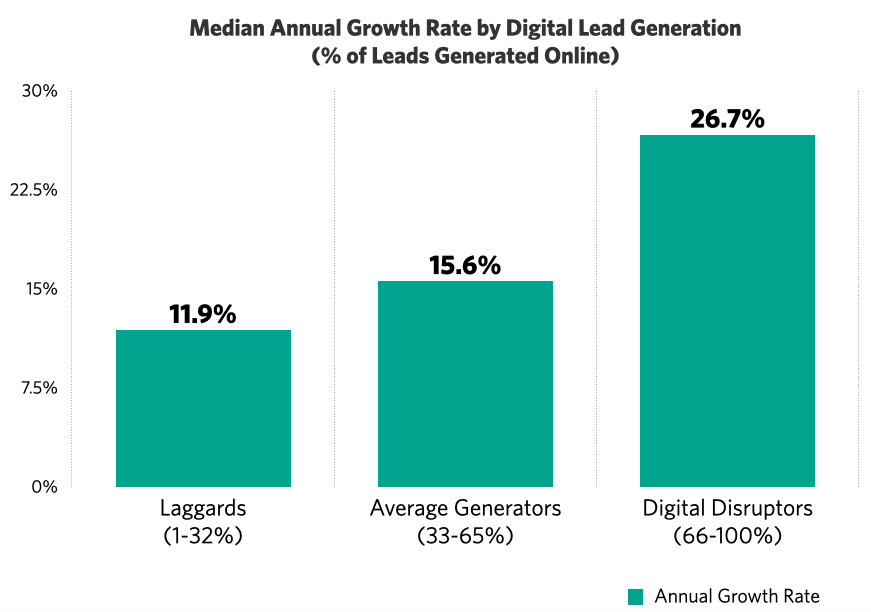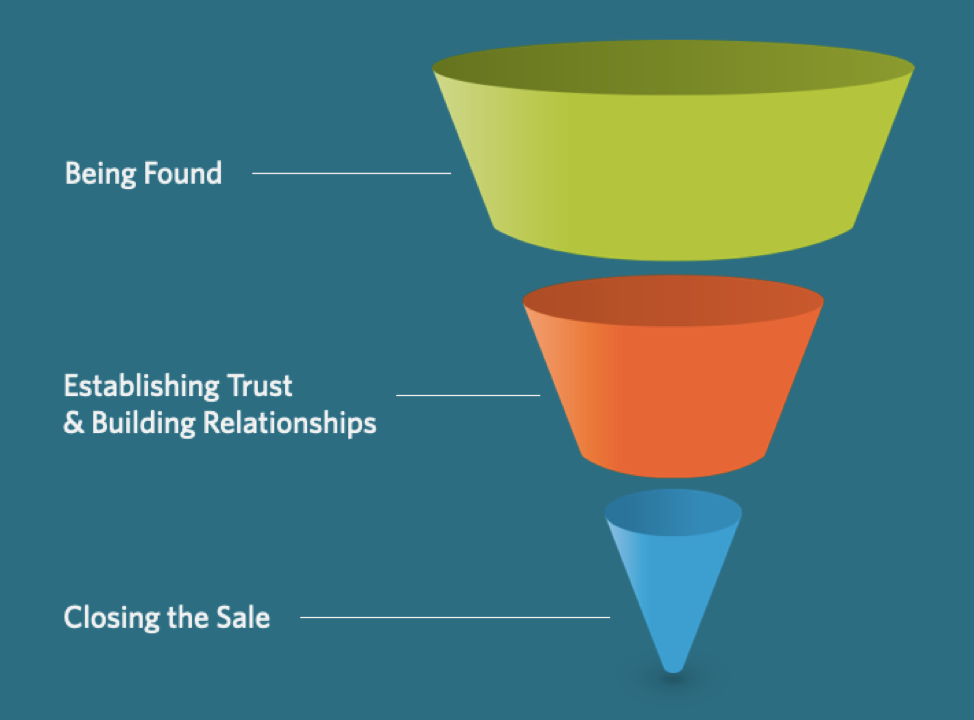Virtual Marketing and Business Development for the Professional Services

Virtual marketing and business development has jumped to center stage as COVID-19 became a household word and shelter in place orders rocked the business world. Almost overnight thousands of professional services firms scrambled to figure out what was going to replace the only marketing approach they had ever known: face-to-face networking and referrals.
In reality, virtual marketing is a trend with an extensive history and many well-developed practices and procedures. At Hinge, for example, we’ve been using this approach for over 10 years, and we have helped countless professional services firms make the transition.
In this post, we want to share some of what we have learned to help firms gauge where they currently are and what approaches are already working for other firms in your industry.
Virtual Marketing Defined
Virtual Marketing is the use of online or digital techniques to achieve strategic marketing and sales objectives without resorting to traditional in-person marketing strategies such as networking at live events, face-to-face meetings, seminars or trade shows. Instead, digital substitutes such as search engine optimization (SEO), social media, webinars or video conference calls are used to attract, engage and close new clients.
Virtual Business Development refers to that part of the overall new business acquisition process that involves qualifying new business opportunities, preparing proposals and turning prospects into clients. In other B2B situations, these activities are often called sales. However, in professional services, the traditional sales function is usually referred to as business development.
For the sake of simplicity, we will use virtual marketing as the most inclusive term, referring to the entire process of finding, nurturing and closing new clients. We will use business development when we are referring to the traditional sales function.
The Importance of Virtual Marketing
Virtual marketing has taken on an increased urgency since the introduction of widespread work-from-home restrictions associated with the coronavirus pandemic. But the push toward virtual marketing for the professional services started well before this disruptive event. It has gained importance over recent years for a couple of very key reasons.
First, there is the simple expedient of being where your prospects are looking. Our previous research has documented an increasing shift in professional services buyers’ behavior toward the use of digital techniques in the researching of business issues and selection of professional services providers.
At the same time, the use of traditional approaches to finding professional services providers, such as asking a friend or colleague for a referral, has seen a corresponding decline. Our research shows that over 70% of pre-engagement activity already happens online.

The second reason is that a virtual or digital approach has important economic advantages. Firms that employ effective digital strategies grow faster than their more traditional peers. But it doesn’t stop there. They are also much more likely to be highly profitable.
Let’s face it, flying around the country and attending live events are time consuming and expensive. And while these traditional approaches can be effective, they are not particularly efficient.
As you might imagine, virtual marketing has a number of significant advantages.
Advantages of Virtual Marketing
- Allows you to be visible where your prospects are looking. Perhaps the single most important benefit of a virtual approach is that it focuses your presence in the channels where your potential clients are already looking for business insight and guidance. When faced with a business issue, most prospects will first take the easiest and fastest action—they will look online. If they find your useful content there, they will know that you are a good candidate to help them.
- No geographic constraints. Because you have a virtual presence, you are accessible around the clock and around the globe. Suddenly a remote location is no longer an impediment to offering your services to clients anywhere. Many clients already have large, geographically dispersed operations so they are already used to doing business remotely. Plus, you have the option of hiring talent from any geography.
- You can easily demonstrate your expertise. The challenge with demonstrating your expertise is that it is invisible. You can’t tell if a person has expertise simply by looking at them. So how can you make your expertise visible? You do that by making it tangible—writing an insightful blog post or delivering a helpful webinar. And unlike a traditional face-to-face educational event that only happens once and is only seen by a limited audience, a virtual webinar can be accessed over and over again. Your potential audience is greatly expanded.
- You can offer high-value specialized expertise. Specialized practices used to require a large population base or a life lived on the road. That is no longer true. Miami or Seattle, no problem. You’re hopping on a video conference call, not an airplane. Since you have access to any type of potential client, you can build a practice that is highly specialized and highly valued by your target audience.
- Services can be packaged and branded. Given that you have access to a vast number of potential clients, it is practical to offer services in branded packages. Not every potential client will be a good match for your branded services package. But that is not a problem. Since you can access such a wide selection of prospects, you can shape your content and marketing strategy to attract those prospects that are a perfect fit with your offering. And those that you do attract will be much easier to convert into clients since they are looking for exactly what you are offering.
- Saves time and money. In almost all cases, virtual marketing is less costly and less time consuming than the traditional alternatives. Most travel is reduced or eliminated. Instead of taking two or three hours to attend a live networking event, you can spend 20 minutes on social media. It comes as no surprise then, that firms that generate more of their business virtually are more profitable.
- Drives faster growth. Just as virtual marketing drives greater profitability, it also drives greater growth. The figure below shows that the greater the level of your online business generation, the faster your firm grows. Why would that be the case? We believe that a strategy centered on virtual marketing and business development more closely mirrors the way today’s buyers go about understanding business challenges and selecting professional services providers.

Virtual Marketing and Business Development
Many folks realize that virtual marketing strategies and techniques work well to attract new business leads. What they may not realize is that a virtual approach is also well suited to nurturing those leads until they turn into opportunities and then convert those opportunities into paying clients. In short, a virtual approach works on the entire marketing and sales funnel.
As potential clients move through the new business funnel, different virtual techniques become more or less relevant. For example, SEO is very important in attracting potential leads, while video case studies are more applicable to closing new business.
There are also a number of techniques which work well at multiple stages of the funnel. For example, social media can be useful in both attracting and nurturing new leads. And video conference calls work well during both nurturing and closing prospects.
In the next section, we’ll identify and describe some of the most widely used virtual marketing techniques and show you where they might be employed in an overall strategy.

Virtual Marketing Techniques
Virtual marketing and business development employ a variety of digital tools, some very familiar, and others less widely understood. We have grouped the most widely used techniques together, to help you understand how these tools can be used to execute a modern virtual marketing strategy. But keep in mind that many techniques are applicable to multiple stages in the new business development pipeline.
Techniques to Increase Visibility
These techniques help you be found by your target audience, so they are generally top-of-the-funnel techniques. They also tend to convey credibility and signal your areas of expertise.
Search Engine Optimization When faced with a business challenge, most potential clients’ first step is to do a web search. “Googling it” is a fast and easy way to acquire both information and a perspective on how to approach the issue. SEO is the process you use to be found for relevant searches. It involves understanding which terms and issues you should target (keywords), having helpful content that speaks to that issue, offering a well-designed, mobile-friendly website and cultivating high-quality links to that page (backlinks) that tell search engines influential websites think your content is helpful. If this sounds like a lot of work, you are right. But it is worth it. Beware of shortcuts or “hacks.” There are none. These are scams.
Guest Authorships Guest authorships are blog posts or articles you write for other people’s blogs or online publications. These are typically trade publications or influential thought leaders’ blogs. Many are free, but some publications offer sponsored (paid) content. These guest authorships increase your visibility among target audiences and boost credibility (usually). Another big benefit is that you can sometimes get a link back to your website, which helps your site’s ability to be found (see backlinks above).
Digital Advertising There are many variations on paid digital advertising. Ads that show up on the same page as search results (paid search) are an alternative to SEO, for example. You can also target specific company or role profiles (e.g., CTOs or HR Directors in large firms). This is helpful when you are trying to reach a new target audience or have a new message to communicate. Digital advertising in not widely used by professional services firms, as it is not always cost effective.
Techniques to Communicate Expertise
These techniques typically involve deeper engagement and the opportunity to share your expertise and communicate your story in greater depth and richness. We tend to think of these techniques as mid-funnel, as they build and nurture a relationship. However, in many cases they are also helpful in attracting new prospects and closing new business.
Blogging A blog is a dedicated section of your website where you publish helpful content, usually articles or short videos. Blogging is a classic way to demonstrate your expertise in a very tangible way. These blog posts are often the “content” that is found by the search engines. It should be educational and helpful. This content both attracts traffic to your website, increasing visibility, and conveys your expertise.
Digital Publications There are many types of digital publications, ranging from white papers and executive guides to research reports and e-books. What they share in common is that they are “premium content,” in exchange for which prospects are willing to fill out an online form to receive. This is a critical technique for building an email list . If your content is truly relevant and valuable, most people will gladly exchange a small amount of personal information for it. The depth of this content also conveys your expertise more fully.
Webinars These online educational events serve a similar function to the digital publications described above. The primary difference is that they are aural and visual rather than written communications. As such they have a greater appeal to some people. If they are “live,” rather than prerecorded, they also allow for interactive elements such as Q&A and polls. Many formats are possible. Think of them as digital seminars.
Podcasts In some ways, podcasts as similar to radio programs. They are audio recordings of interviews or monologues on topics of interest to your target audience. Often popular with people facing long commutes or looking to learn while they exercise, these formats are often very personal as well as informative. As such, they cultivate a comfortable familiarity and help build a relationship.
Virtual Events Virtual events are the logical extension of webinars. They typically run longer, however—from a couple of hours to multiple days—and they may include multiple presentations, panel discussions, Q&A sessions and the like. Think traditional conferences and events migrated to the virtual world.
Video Case Stories and Testimonials Professional services have a long history of using case stories and client testimonials to convey their expertise and show prospective clients how they can help them. Capturing these stories on video allows them to be accessed repeatedly without having to bother your clients to give “live” testimonials. These help prospects get a better feel for what it’s like to work with you and how your expertise might apply to their situation.
Techniques to Build Engagement
Engagement is a two-way street. These techniques help you reach out and communicate your message and engage in a conversation. While social media is useful throughout the whole marketing funnel, these are typically used in the business development (sales) part of the process.
Emails As one of the oldest and most universally used digital techniques, email continues to play a critical role in developing new business. It is your direct link to individual prospects and how you deliver your content and offers. It gives you tremendous flexibility to personalize your marketing, especially when paired with marketing automation.
Social Media Social media is the digital equivalent of traditional networking. You can use it to research and find new prospects, monitor marketplace activity, build engagement and even generate referrals. As with traditional networking, success requires time and attention, as well as an approach that involves giving as much as getting. Different social media platforms are popular with different audiences, so be sure you understand the habits of your target audiences before committing to a platform.
Video Conference Calls Conference calls have long been an integral part of most firms’ business development efforts. Changing technology and evolving social norms have now elevated the video call to center stage. No longer a novelty, firms are learning that a video call is just about as good as a face-to-face meeting for most business purposes. Engaging with prospects and closing sales are perfect uses.
Marketing Infrastructure
While we don’t normally think of infrastructure as a “marketing technique” per se, these software tools enable the implementation of the techniques described above. Here are a few of the main categories you may consider.
Website The hub of all your virtual marketing and business development activities, your website is arguably your single most important marketing tool. Everything else is either housed there (e.g. your blog) or connected to it in some way. It needs to be a modern, well-designed communications and business development platform. Almost every prospect, job candidate or referral source will visit it, and it can be the single biggest reason you get ruled out as a possible service provider. Take it seriously.
Marketing Automation Marketing automation is a rapidly evolving area, with scores of players. Every year, these systems add to an ever-expanding list of features. In addition to saving an incredible amount of time, they also allow you to personalize your offers and automate the follow-up process.
Communication Platforms These are the platforms that let you communicate easily with you prospects via video (e.g., Zoom, Go-To-Meeting and WebEx), hold a webinar (e.g,. Go-To-Webinar or On24) or send an email.
Limited Function Apps There are also thousands of apps and data services that help automate the research, analysis and implementation tasks associated with any marketing technique. From SEO to social media, they help you lighten the load.
A Final Thought
The time to consider a more robust virtual marketing and business development strategy is here. Long-term trends in professional services buyers’ behavior have set the stage, and the pandemic of 2020 has made it a necessity.
While the transition to virtual marketing may be challenging, it is worth the effort. A “virtual-first” strategy is not to be feared or avoided. In fact, it is a direct route to faster growth and greater profits for your professional services firm.
Industries & Topics
Most Popular
- Business Development Strategy: A High-Growth Approach
- A 10 Step Brand Development Strategy for Your Professional Services Firm
- Strategic Marketing for Professional Services
- Digital Branding for Professional Services
- 10 Essential B2B Marketing Strategies to Grow Your Professional Services Firm
- Digital Marketing Strategy for Professional Services
- Rebranding Strategies: A Step-By-Step Approach for Professional Services
- Elements of a Successful Brand 1: Brand Positioning
- The Top 5 Business Challenges for Accounting & Financial Services Firms
- Find Your Differentiator: 21 Ways to Gain a Competitive Advantage for Your Firm
- Elements of a Successful Brand 4: Brand Promise
- What Is the Cost of Video Production for the Web?





Leave a Comment